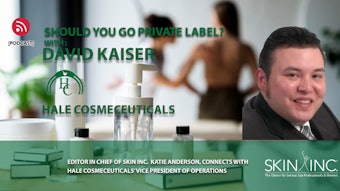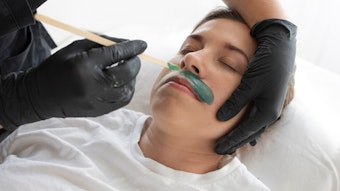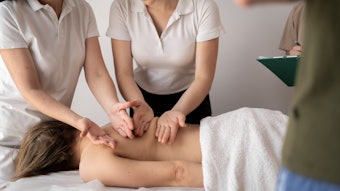There is immense value in on-site, in-house training. Workplace education represents one of the most important contributions to an entrepreneurial enterprise because it often results in significant improvements on many levels. Every successful facility needs a highly competitive training program to keep its team members informed about changes and to ensure that everyone is fully informed. In-house education has become a necessity in order to keep up with trends in today’s client-driven, hyper-responsive business environment. Owners and managers are beginning to acknowledge that what their staff does not know about the behavioral science of consumerism and merchandising can be deadly to the life of their enterprise.
Exploring educational possibilities
Not too long ago the trend was for employers to encourage standardized knowledge and treatment abilities from their team members by outsourcing education, but with so many new industry developments and changes to constantly monitor and consider, it is clear that this approach has become antiquated. Today, every spa has to place a higher level of importance on customized education that revolves around their team members’ professional interests, treatment room experiences and individual skills. Since the advent of the information age, it is not enough for skin care professionals to just keep busy; they want to derive satisfaction from their jobs. It is inherent to search for things at your place of employment that add pleasure and give richer meaning to what could otherwise be a boring experience.
No business owner who hopes to generate large profits can expect to do so with a team that only deals with its operation superficially. To help better balance employee involvement, team members must be encouraged to gather their own educational intelligence and adapt what they learn to their own mistakes and successes. The results derived from their own observations and performance reviews is of central importance to the construction and content of a solid in-house curriculum. Responses that reflect considerable error are of the greatest value. Content-related evidence breathes life into learning programs, but, more importantly, gives voice to the training participants who have contributed to it, which increases their interest levels.
In-house manual
The main goals for developing in-house manuals and educational aids should be clarity, simplicity and completeness of information. If the training materials are also geared toward high-performers, then originality of content is essential to peak and retain their interest levels. Lessons that allow for radical shifts in treatment consciousness will retain the attention of the more intellectually inclined who tend to be far more critical about training attempts. A brief manual is preferred by most spa team members in order to avoid exhaustion. To truly enjoy and lend their hearts to the educational experience, staff members must be motivated and embrace the opportunity to take in new knowledge.
Additional features
Because there is a large focus on medical esthetics these days, accuracy is a must. All resources need to be cited for reference, and whenever and wherever necessary, rationale must be described thoroughly. Incremental summarizations should be included in the course materials to aid retention. Inserting these evaluation markers permits in-house educators to closely influence whether team members are correctly processing the knowledge.
Self-destructive learning behaviors
The best way to unleash the intellectual potential of hesitant learners who are dead set against in-house training is to entice them to discover something new about what they do for themselves. When team members understand how certain information is applicable to their specific work concerns, they are more likely to give credence to this information.
One of the easiest ways to encourage reluctant trainees is to observe their areas of strength and build on them. For example, a vast majority of skin care professionals pride themselves on the many ingenious ways they go about the client intake process. The basic structure that serves as a platform for skin analysis can be incorporated into an in-house training session as a fundamental learning strategy. By tapping into this analytic format, in-house trainers can use similar analogies to serve as a platform for myriad academic puzzles and treatment riddles in order to minimize many of the trepidations of those who are slower to grasp new knowledge. The inclination to solve a mystery is far greater than to memorize academic material on the command of an instructor.
Testing principles
How a quiz or a test is formatted will depend on its role in the assessment process. More effective testing methods depend upon mode of administration. Verbal interpretations offered in roundtable discussion formats help to stimulate brainstorming and can be very engaging for all involved. In-house instructors can use these informal testing sessions to determine which trainees are struggling with the full force of the academic exchange without having to single them out. Constant alterations in testing applications keeps trainees in tune with information imparted—pop quizzes are always unexpected. To ensure that information is classified properly and that students do not become confused, separate testing on related content is strongly recommended. The recital of checklists is self-empowering for learners because it encourages them to draw from prior knowledge and link their previous intellectual acumen to more current concepts, which enhances their memory for details.
The future of in-house training
Academic principles, teaching activities, learning methods and study skills, and educational support aids motivate staff to keep changing at a faster pace. In-house education is a never-ending process because the skin care field demands a constant evolution in order to meet the diverse needs of its clientele. Managers of state-of-the-art facilities must make it their responsibility to investigate and introduce new knowledge in order to challenge their team members, and assist them in achieving their professional goals. In the future, more highly developed imaging, better thought-out hypothesizing, more unique ways of performing instructional demonstrations and many additional learning outlets will be available to positively influence and encourage a multitude of self-directed work site learning behaviors.
Growing Your Career: Increase Revenues with In-house Training
May 21st, 2008










